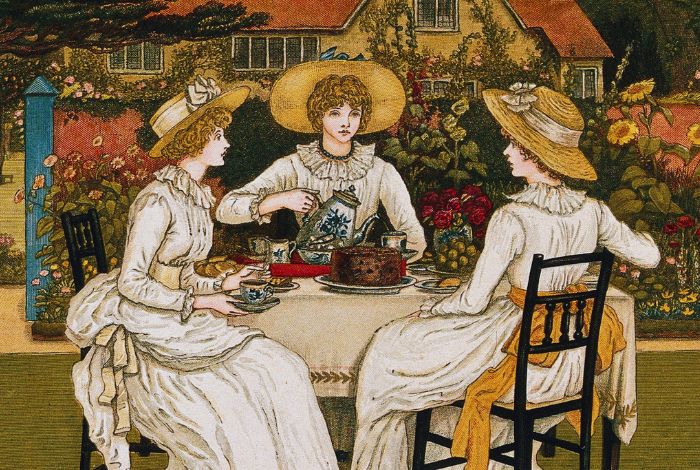Tea is one of the first plants to captivate the Western world. Henry Hobhouse presented tea in his book “Seeds of Change” as one of six plants that shaped the history of modern civilization. We’ve already found and recommended unique gifts for tea lovers, and now we present you with seven mind-blowing facts about tea. Brew yourself a cup of tea and enjoy these fascinating insights!
1. The First Tea Ever
Tea is closely associated with Zen Buddhism (or Chan Buddhism in Chinese). Legend has it that Bodhidharma, the founder of Chan Buddhism, fell asleep during meditation after nine years of staring at a wall in a cave in southern China. Upon waking, he was so frustrated that he tore off his eyelids and threw them to the ground, where tea plants miraculously sprouted. You can find more wonderful zen stories in the book ” Zen Flesh, Zen Bones” by Paul Reps and Nyogen Senzaki, or if you want a bigger picture, check the book “An Introduction to Zen Buddhism” by D. T. Suzuki (with a foreword by Carl Jung!). Also, D. T. Suzuki wrote the book “Zen and the Art of Tea“, which is a rare find! Also, if we may recommend you, check our list of Japanese esthetics unique and original gifts.
2. Tea Bricks as Currency
In ancient China, Central Asia, and Siberia, tea was so valuable that it was used as a currency. Tea was compressed into bricks, and these “tea bricks” were used to trade for goods like horses and swords in Tibet. (Learn more about tea money here ).
3. Tea vs. Chai
Depending on whether tea reached Europe by land via the Silk Road or by sea, two names became common: tea and chai. The word “tea” comes from Min Chinese “te”, while “chai” or “chay” originates from Mandarin and Cantonese – “cha”. This is why we see “chai” or “chay” in languages like Persian, Russian, Turkish, and Arabic, while “tea” dominates in English, German (Tee), French (thé), Italian (tè), and Spanish (té). An exception is Portuguese, where “cha” is used due to their trading in Macau, where they heard and adopted the Cantonese pronunciation.
4. The Origin of the Tea Ceremony
Though Japan is famous for its tea ceremony, the tradition actually began in China. In the 8th century, Lu Yu (陸羽) wrote a book detailing everything about tea, from its preparation to its cultural significance. Legends even speak of his refined sense of taste. Lu Yu claimed that drinking tea four to five times a day could improve mood and alleviate ailments. Today, one of the most renowned tea and tea-ceremony-related books is The Book of Tea by Kakuzo Okakura. (Read more about the tea ceremony here ).
5. Tea as a Cause of War
Tea was highly coveted in Europe, making it an expensive commodity. British traders found a lucrative trade-off: exchanging opium for tea. This led to widespread opium addiction in China, with a fifth of the population becoming users. When China shifted from accepting opium to demanding silver as payment for tea, tensions escalated. The Chinese emperor ordered the destruction of opium stores in Canton, igniting the Opium War. Check also the book “Imperial Twilight: The Opium War and the End of China’s Last Golden Age” by Stephen R. Platt about this war that changed the course of history in China.
6. The Oldest Tea House in the World
Tsuen Tea, located in Uji, Kyoto Prefecture, Japan, is the oldest tea house in the world. It was established in 1160 by samurai vassal Furukawa Unai. And when we talk about samurai, did you know that samurai warriors practiced the tea ceremony after returning from battle to find peace of mind? They also participated in tea ceremonies before battles for similar reasons. And you can find more about samurais and tea in the classic book of Hagakure written by samurai, Yamamoto Tsunetomo. We already prepared a list of classical books on martial arts here.
7. Tea Leaves and Fortune-Telling
Tasseography is the ancient art of reading tea leaves to predict the future. Reading Tea Leaves , one of the oldest books on this subject was written by an anonymous author known as “Highland Seer” and was published in the early 20th century. Specially decorated cups and saucers were also popular among tea leaf readers in the late 19th century, a tradition that continues today. If you want to try and find what tea leaves tell you check this fortune-telling tea cup .


